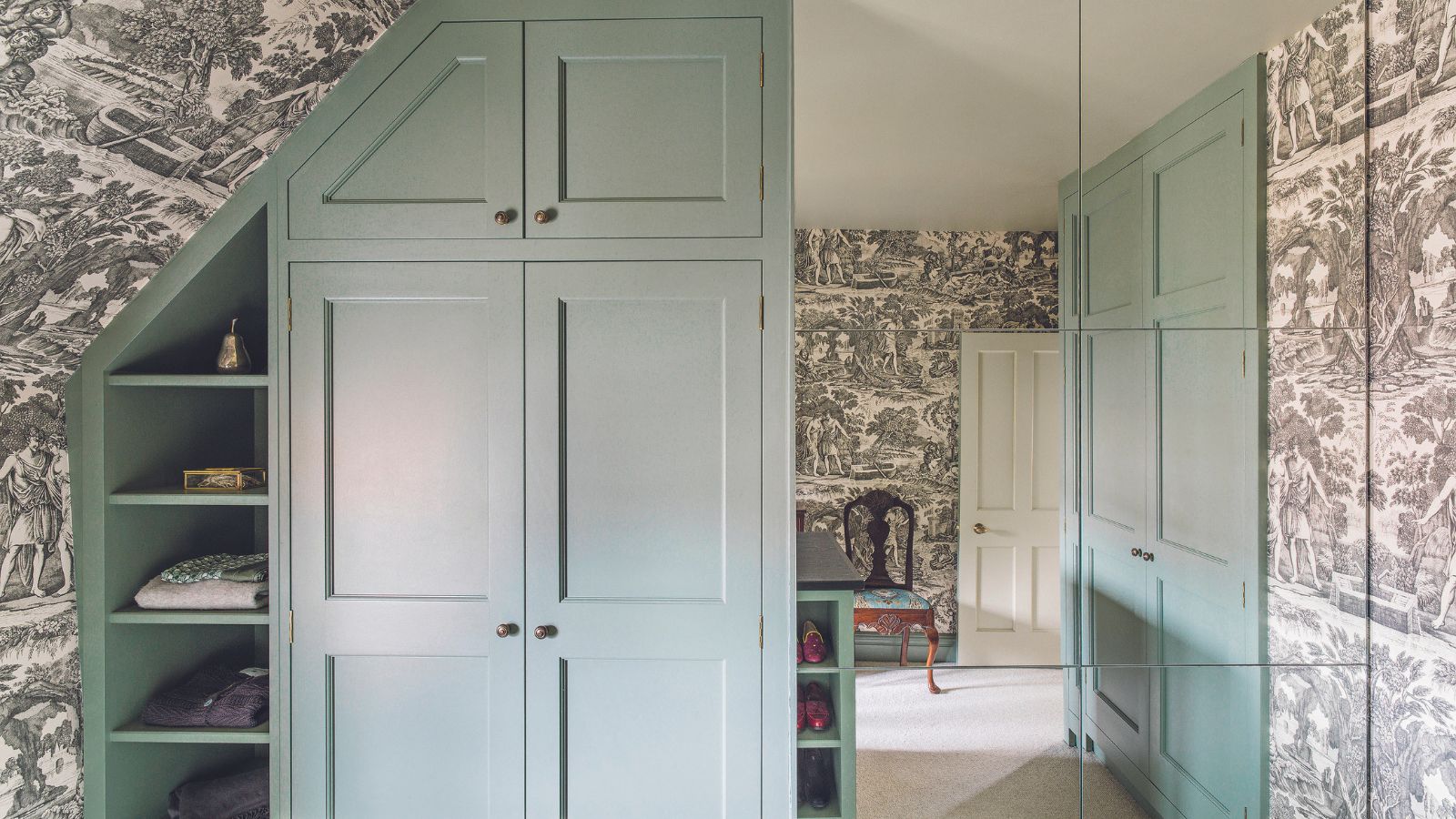
Good clothes storage ideas can make or break your daily routine. Leave them cluttered or disorganized, and your whole day can get off on the wrong foot.
But how do you assert order over a storage spot that is so heavily used?
Here, professional home organizers have revealed their nine best storage ideas and insider tips to help keep your clothes contained, no matter the room size or budget.
9 clothes storage ideas pros swear by
1. Opt for custom
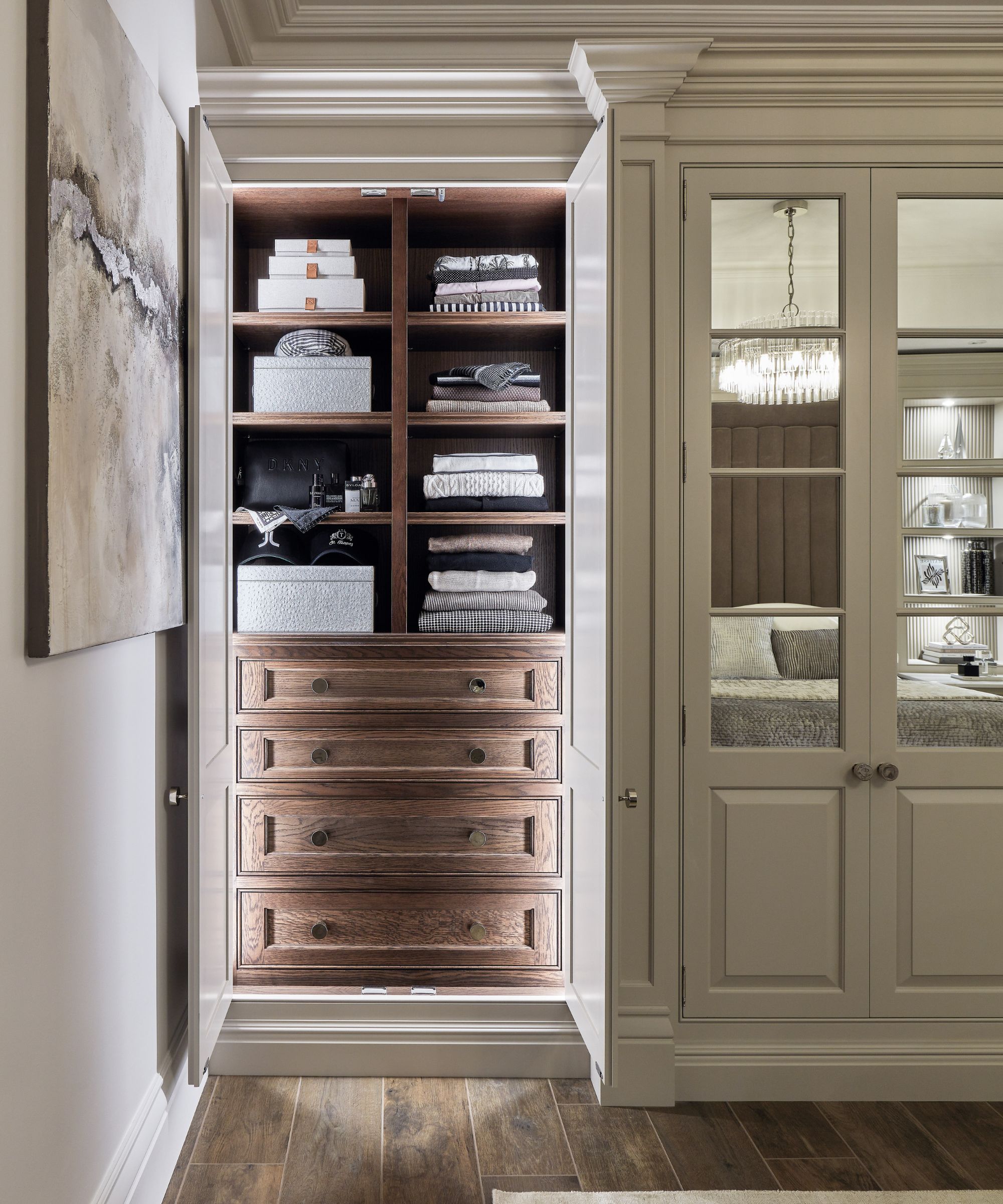
While a freestanding closet or antique armoire can add character to a bedroom, fitted clothes storage ideas offer a bespoke solution for organizing clothes that can be tailored to better suit the space and size requirements. Where single rails were once the norm, a combination of interior storage with rails, shelves, and drawers can offer a more practical mix.
Rachel Hutcheson, National Retail Manager at Sharps begins, ‘Once you have considered the capacity, start to think broadly about the design element of the interior fit out and what you might like to include. There are many options for personalizing a fitted closet to ensure it works perfectly for your lifestyle.
'For example, combining hanging rails with pigeonhole shelving. Internal drawers and shoe storage will help keep you organized whilst allowing easy access to the clothes you need, when you need them.’ Consider, too, whether you want space in which to organize jewelry and organize makeup.
If you are considering walk-in closet ideas, Simon Tcherniak, senior designer at Neville Johnson adds, 'A bespoke furniture company will usually be able to create a dressing room or walk-in wardrobe from any practical size available, but a room width or depth of at least 1.3 m is a sensible minimum to have in mind. To hang clothes without restriction,s you really need a depth of 650mm, plus space to walk in.'
Of course, if you are wondering how much fitted wardrobes cost to install – and perhaps want to spend your budget elsewhere, there is an alternative to a bespoke walk-in wardrobe: creating your own using off-the-peg fixtures and fittings.
Use a modular storage system, such as Elfa system, from The Container Store, which consists of various components, ranging from a basic framework to add-on rails, shelves, drawers, and baskets that can be configured to create a tailored arrangement.
2. Work out what to hang
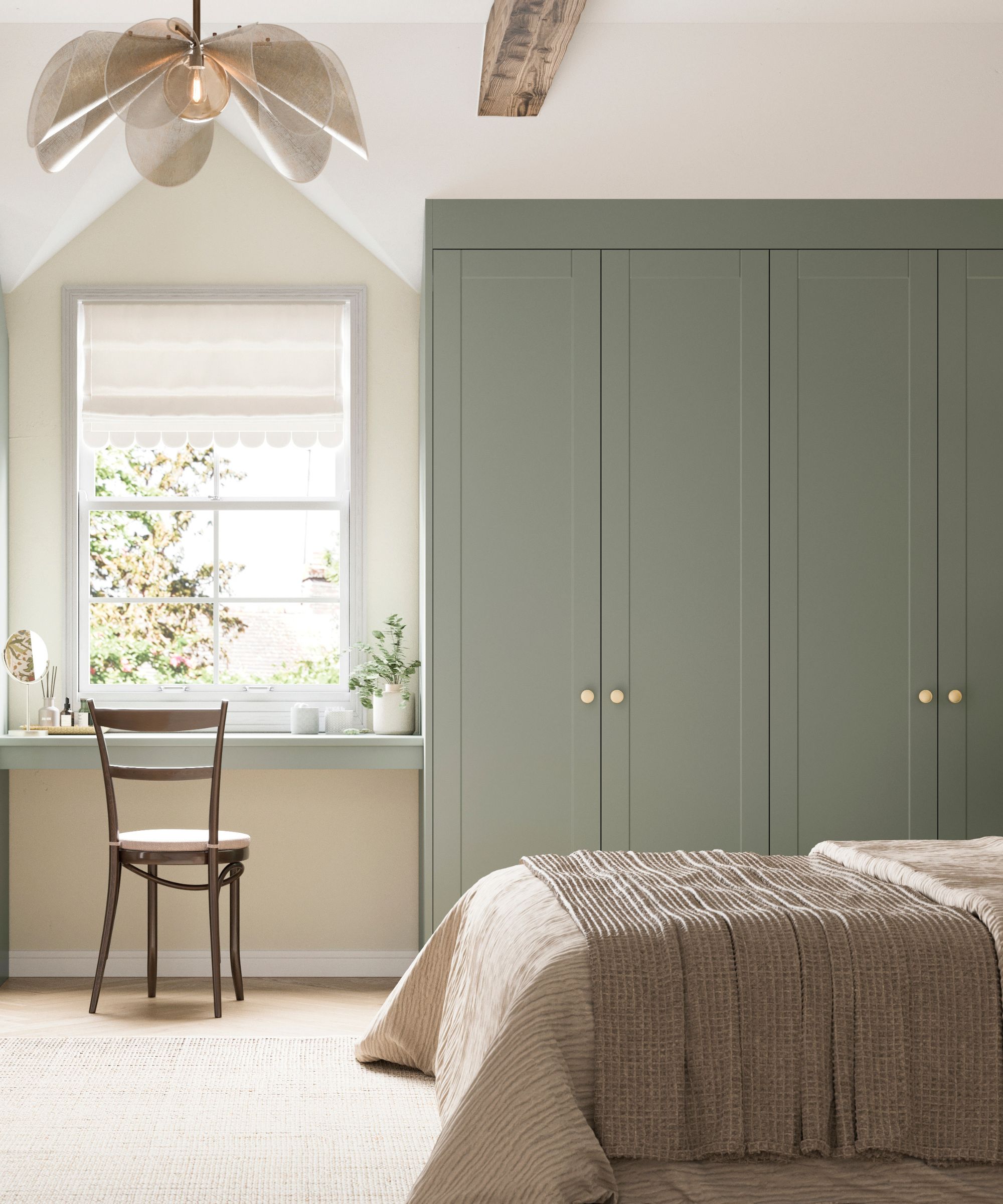
Shaniece Jones, LA-based professional organizer and declutterer, and founder of Closet Therapy™ says, ‘What to hang and what to fold? The million-dollar question. As a professional organizer with a focus on closets, I always prioritize what’s best for the clothes, not just what looks neat. Certain pieces should never be hung, either due to the delicacy of the fabric or the temperature and humidity of the space they’re stored in.’
The general rule of thumb is to fold anything that is heavy and may stretch, such as knitted natural fiber garments, or if it is too small to waste a hanger on, such as shorts or camisoles. Almost everything else can be hung up.
However, Shaniece adds, ‘Hang your sweatshirts. Most people assume folding is the better option, but sweatshirts are typically thick and take up more drawer or shelf space when stacked. Hanging them not only saves space but also helps prevent that awkward crease across the middle and makes them easier to access when you’re in a rush. Velvet hangers are a great option for this.’
Courtney Cummings, professional organizer and owner at The Stylish Organizer agrees, adding, ‘Slim velvet hangers [available at Walmart in packs of 60] are your best friend. Not only do they hold on to slippery clothes, but they also take up 50% less space than a traditional plastic hanger. More hangers equals more of your favorite shirts in the same size space.’
It's worth noting that wire hangers can often cause damage.
3. File fold
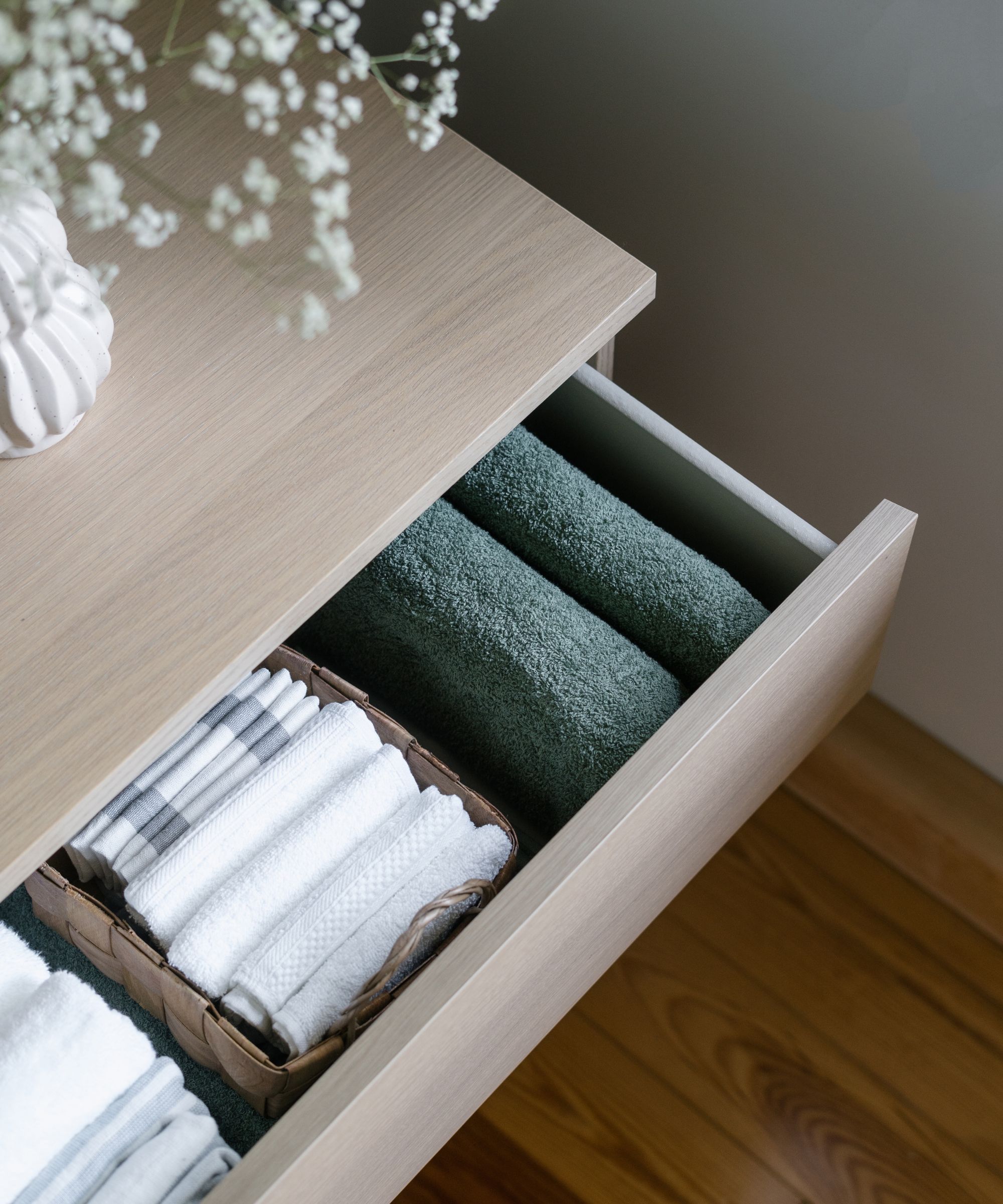
For those items that you decide to fold, consider using the file-folding method to fold clothes to save space and keep everything neat, suggests Courtney.
She shares, ‘Turn any unruly drawer into an Instagram-worthy space with adjustable drawer dividers. Then, use the file-fold method to enhance the visibility of clothing items in your drawers. It works especially well for bulkier items like pajamas, sweatshirts, sweaters, and loungewear. Measure the depth of your drawer to ensure the proper fit for your new drawer dividers.’
These adjustable drawer dividers, from Walmart, come with additional dividers to section of smaller areas of your drawers for more precise clothes storage.
For more delicate or bulkier items, such as natural fiber sweaters, Shaniece adds, 'Sweater bags and boxes are my favorite tool. Not only do they save space and protect the garments, but they also look the best aesthetically by stopping towering piles from toppling over.
'The key, I find, is to use white museum archival tissue paper from Amazon at the very bottom to protect the sweaters, and to drop a cedar ball in each sweater box to fend off pests.'
Shaniece also recommends adding cedar blocks, also from Amazon as a non-toxic alternative to mothballs to help protect natural fibers when storing clothes longer term.
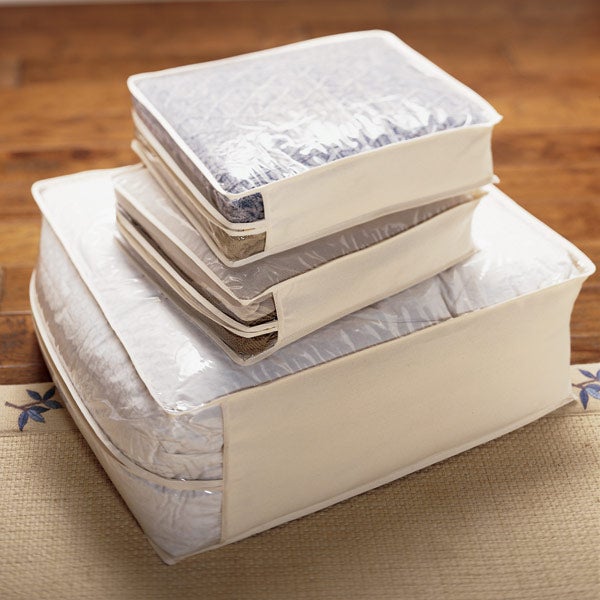
Zip up storage bags are ideal for bulky sweaters that you do not swear often, helping to protect them from pests, snags, and moisture.
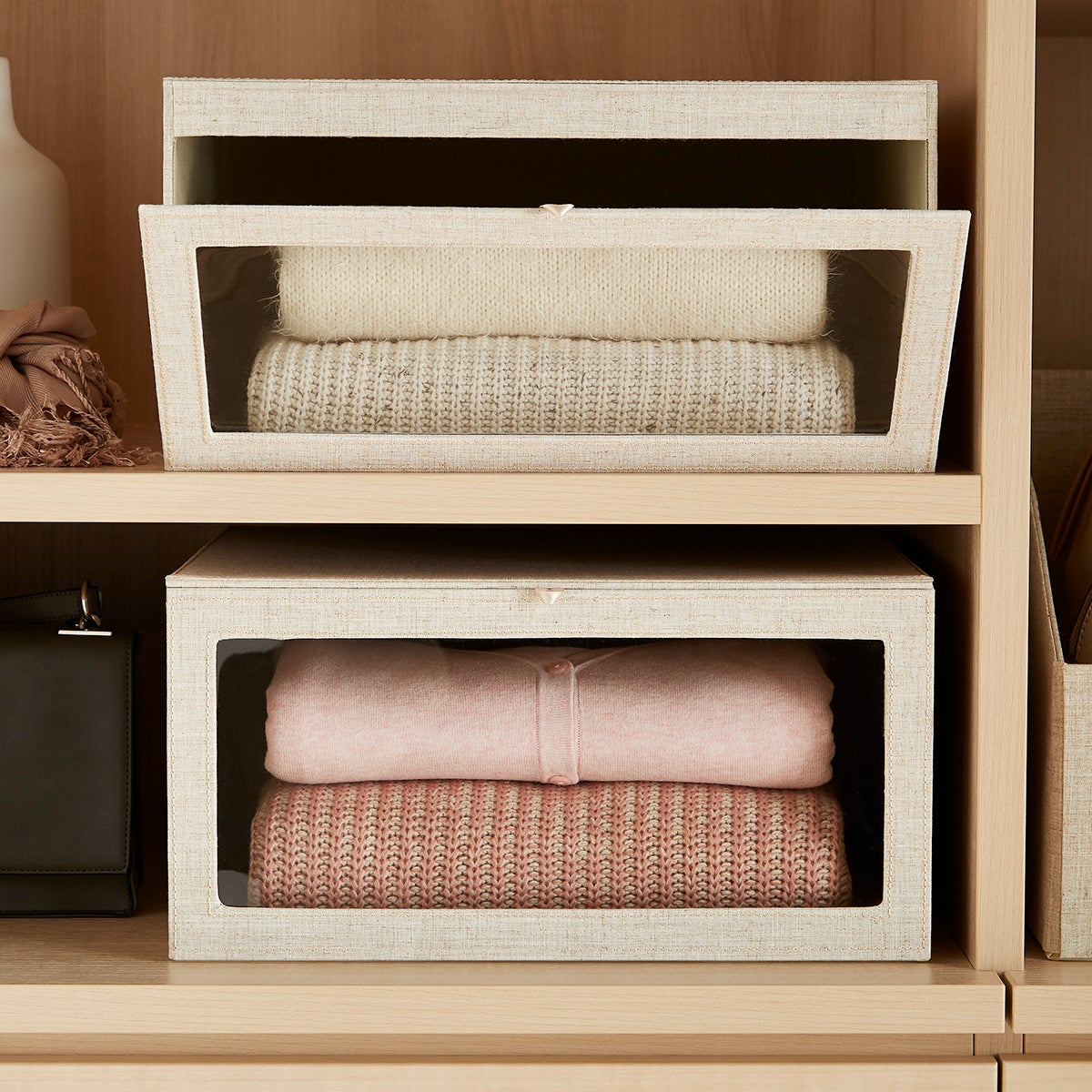
For more delicate items you use more regularly, opt for drop front boxes on shelving to keep clothing neat and pest-free while maintaining easy access.
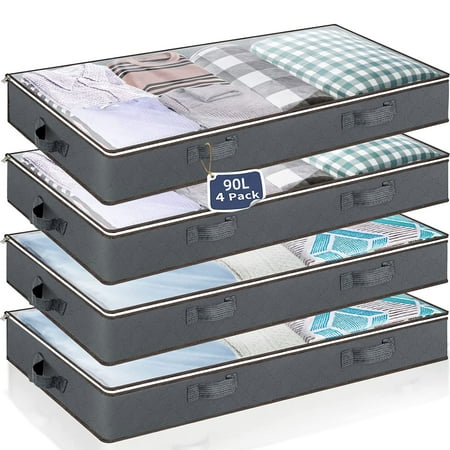
Need to keep very bulky items out of the way? Opt for under-bed storage bags instead, helping you save space in your traditional clothes storage areas.
4. Use opaque bins
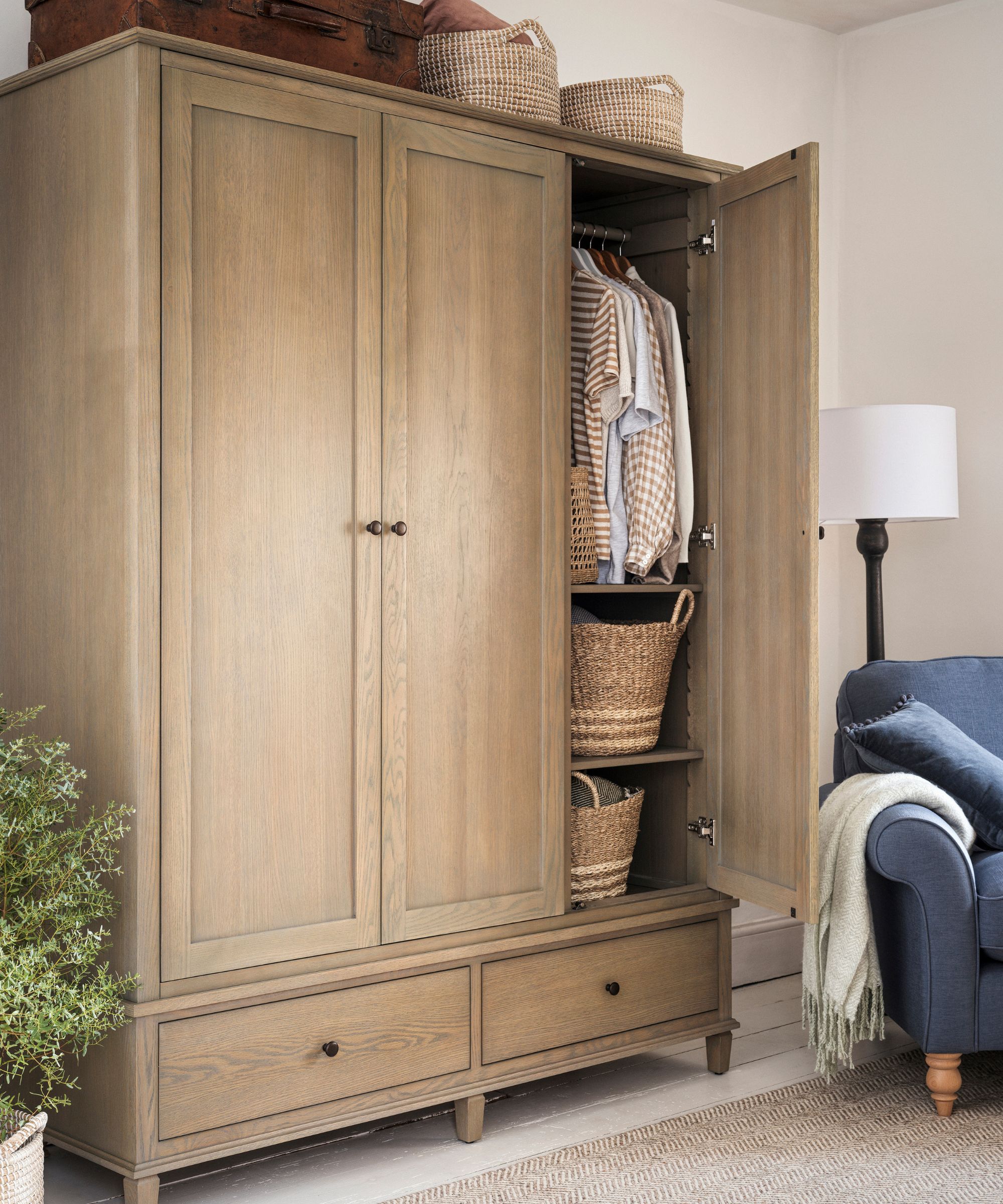
Sometimes, the last thing you want to do is spend hours neatly folding and hanging everything in your clothes storage ideas.
To keep your closet looking tidy and save time, especially with smaller items like accessories or underwear, home organizer Andrea Thompson of Drea Design Services suggests using 'pretty bins with labels to store t-shirts, sleepwear, intimate apparel, belts, scarves, or other small items' which, if left out, can make a closet appear 'busy and hectic,’ she adds.
‘Bins save space but also provide a uniform look. Write what's in the bins on the tags so that you don't have to remember everything in them and will not have to pull them down every time to look in and see what's there.'
You can use a label maker, such as the Brother P-Touch Label Maker, from Walmart, for uniformity, or keep things simple and handwrite tags using sticky labels, also from Walmart.

Opaque baskets are perfect for hiding clutter while keeping up appearances in your bedroom or closet. These baskets can slide neatly onto a shelf or tidy up spots beneath your bed.
5. Use vertical height
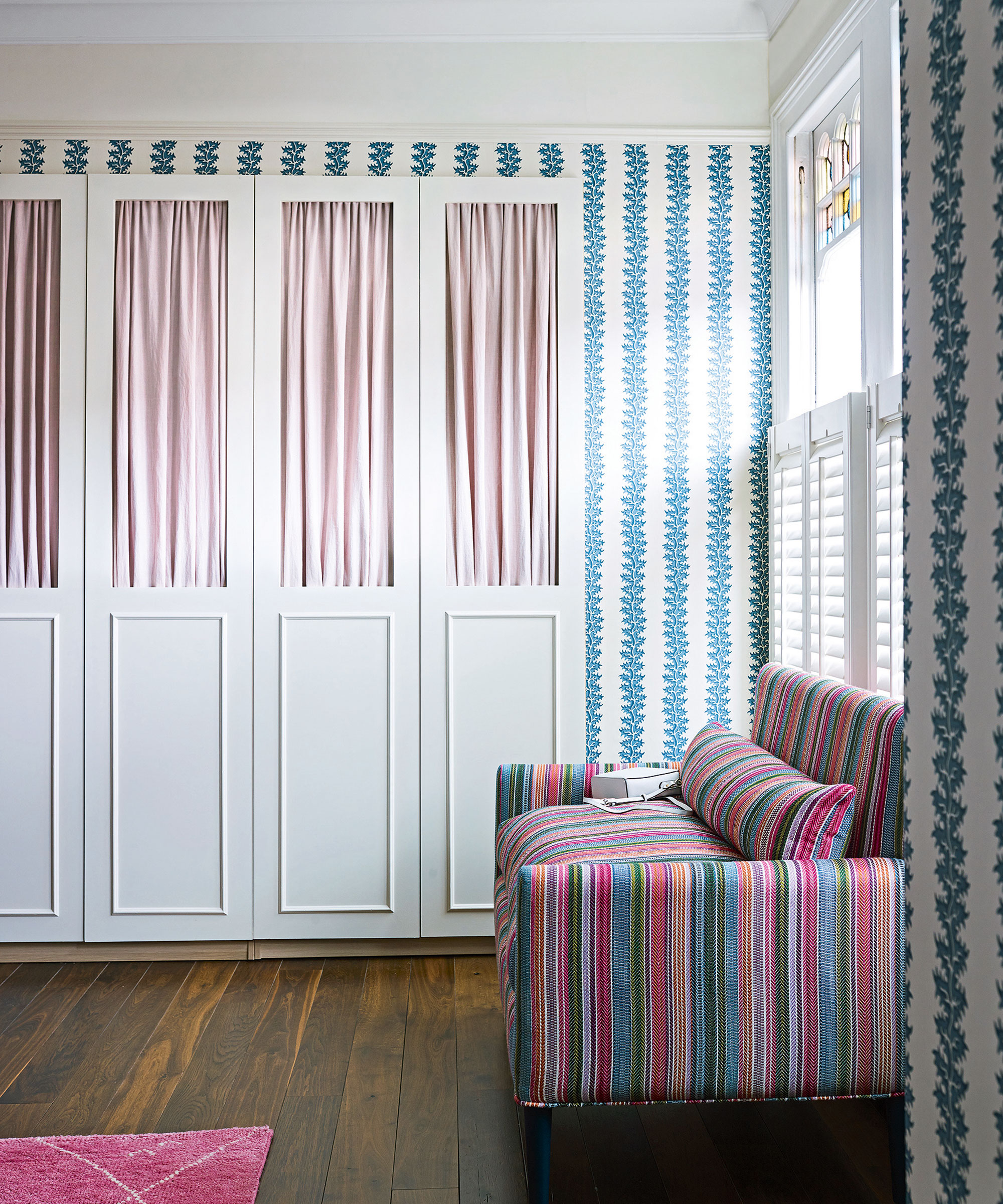
If you are battling with lots of clothes in a small space, use vertical storage to save space.
To double your clothes storage ideas, Angelia York, VP of the Saint Louis Closet Co. explains, ‘double hanging rods in a custom closet set-up doubles your hanging capacity, especially for tops, skirts, and shorter items. It’s a great way to balance your wardrobe visually while keeping everything accessible.’
Similarly, she adds, ‘One of the best ways to maximize space is to use adjustable shelves [we like the Brightroom Three-Tier Adjustable Shelf Box, from Target]. They are perfect for folded items like denim, sweaters, or different-sized items like shoes and handbags.
‘Finally, add hooks to the back of closet doors, empty walls, bathrooms, mudrooms, and even laundry rooms. By adding hooks, you can create additional hanging space for clothing, towels, aprons, and coats.
'These hooks can create a temporary holding spot for damp clothing, items you intend to wear more than once before laundering, and the quick grab-and-go items as you run out the door.’ These over-door hooks from Target are perfect for renters who cannot drill into walls.
6. Keep shoes off the floor
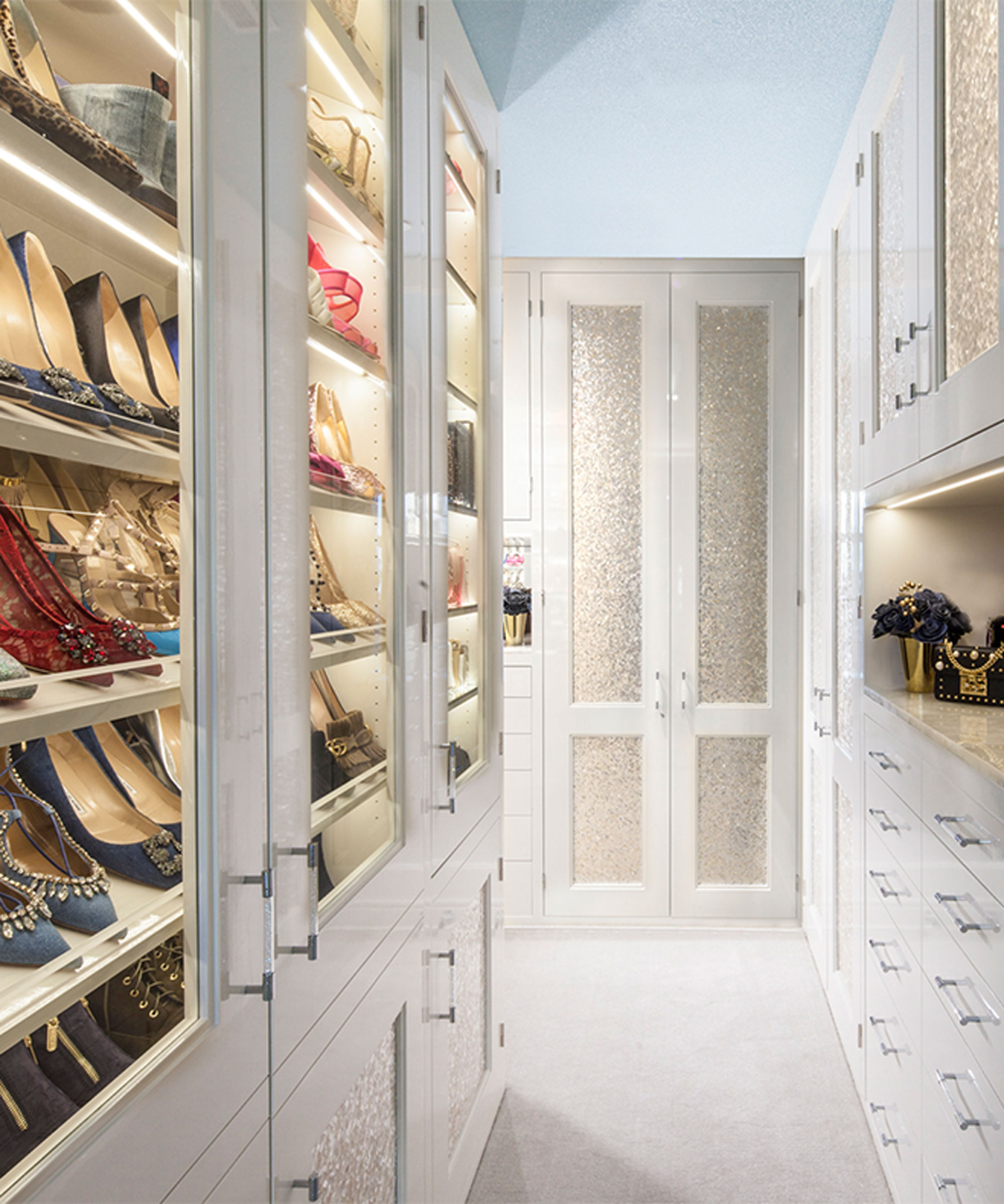
If you have space for your shoes in your clothes storage ideas, great! Just be sure to keep them off the floor to help hide shoe clutter in small spaces, urges Liz Williamson, of Lifestyle Management Co.
She shares, ‘We love using this three-tier shoe rack from Amazon to keep the closet floor clutter-free and make better use of your space. These racks work well in all shapes and sizes of closets and can even be placed in coat closets or other areas of the home to store “outdoor shoes” or pairs you don’t wear as often.’
We have some great tips for maximizing space on your shoe rack if you need the extra space to house your collection, and love the stackable Joseph Joseph shoe storage bins with slide-out tray, available at Amazon as they are sturdy, spacious and easy to put together.
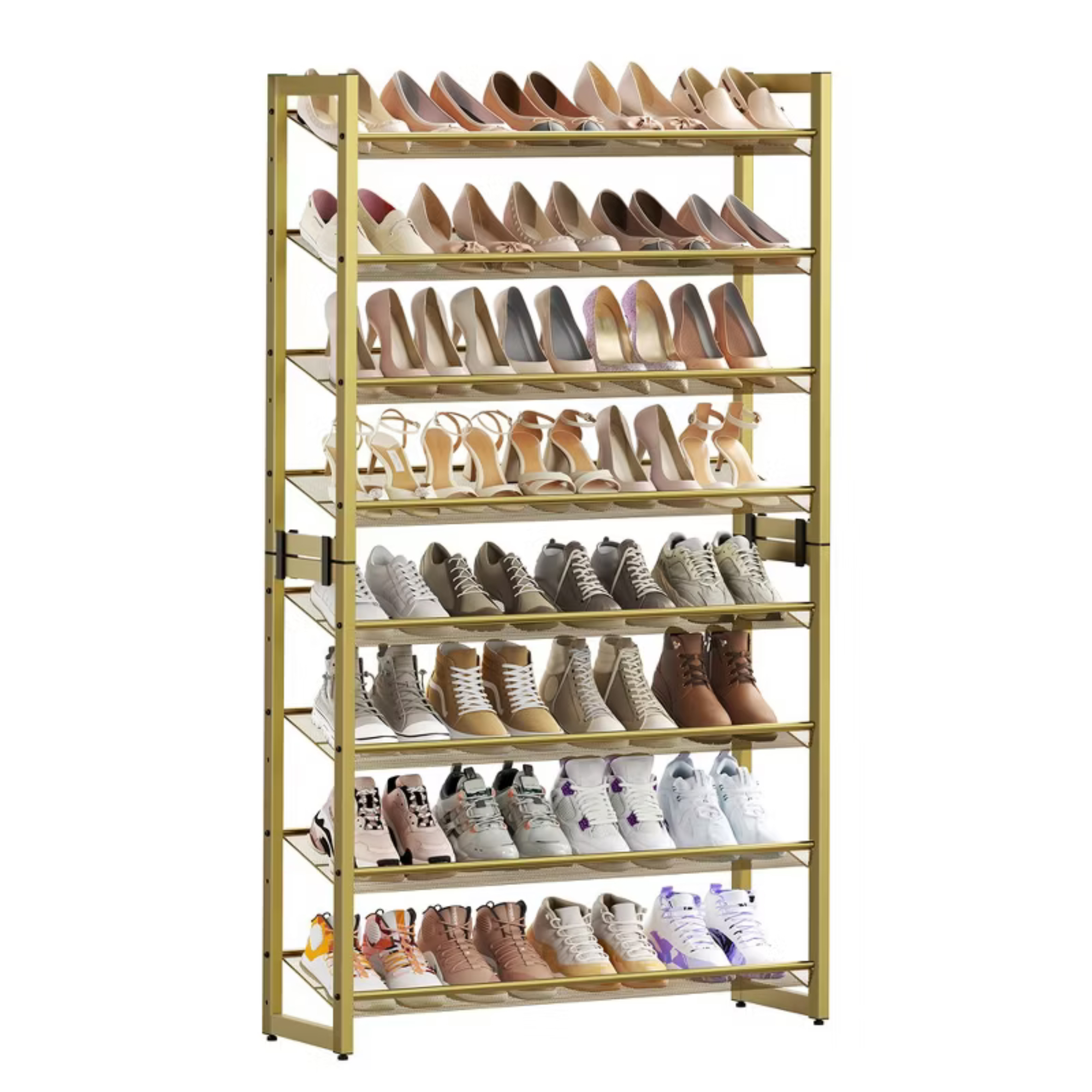
This smart design can be used as a single shoe rack or you can join two together to create one large design that has a custom built look. You can also choose between flat or angled shelves for easy access to your shoes.
7. Increase accessibility with pull-outs
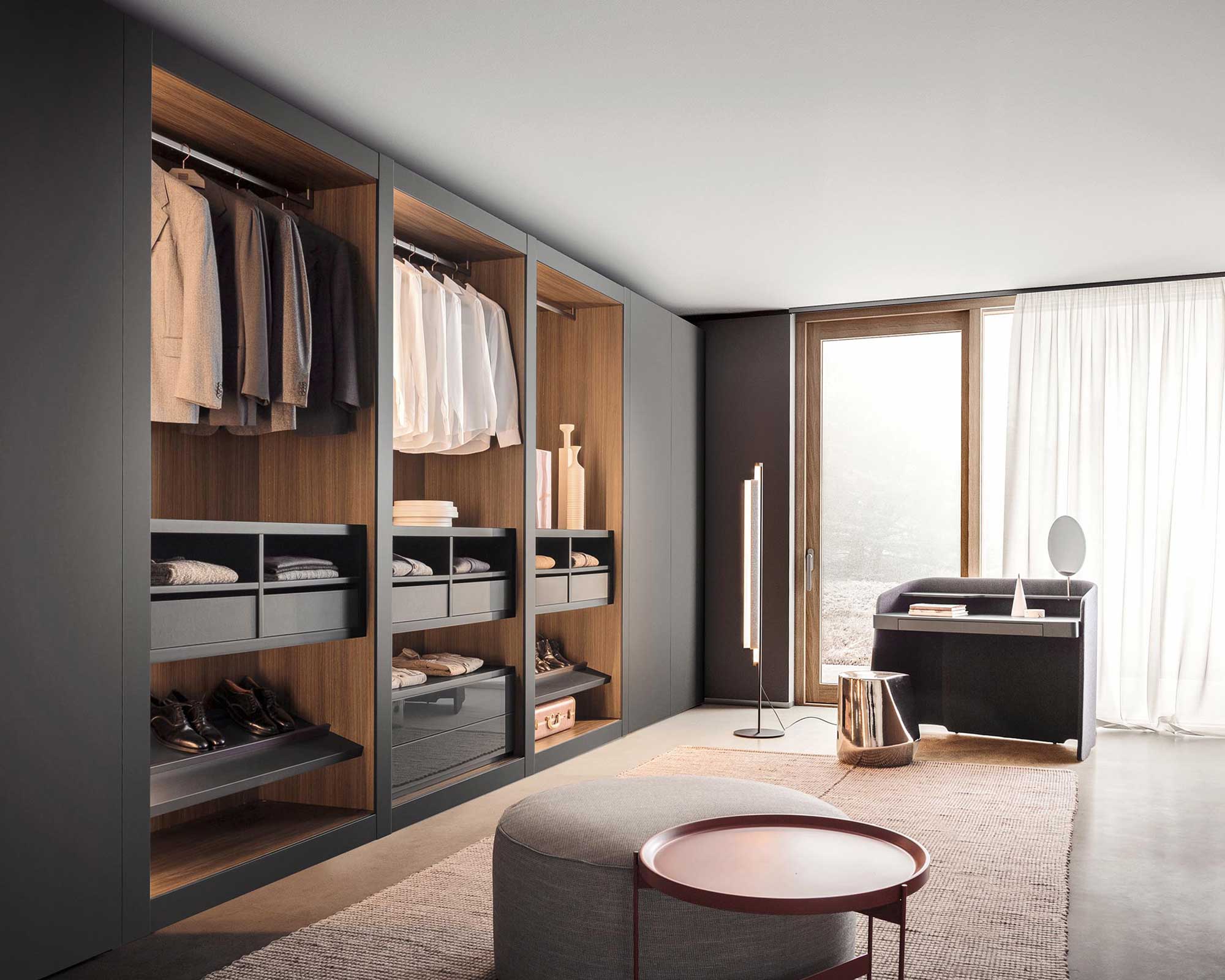
It never hurts to make a home more accessible, and a great place to start is with your clothes storage ideas. Not only will it help you reach what you need, but it is a great way to optimize storage to prevent duplicates, too.
Angela shares, 'Custom pull-out accessories are a game-changer for smaller items. We often install pull-out belt racks, scarf racks, or valet rods [available at Amazon] to maximize vertical wall space. They help keep accessories untangled and easy to grab, and they tuck away when not in use, maintaining that streamlined aesthetic. '
These pull-out shelves from Walmart were designed for the kitchen, but are also a great option for deep shoe storage or for storing and displaying bags or folded garments.
8. Consider off-season storage
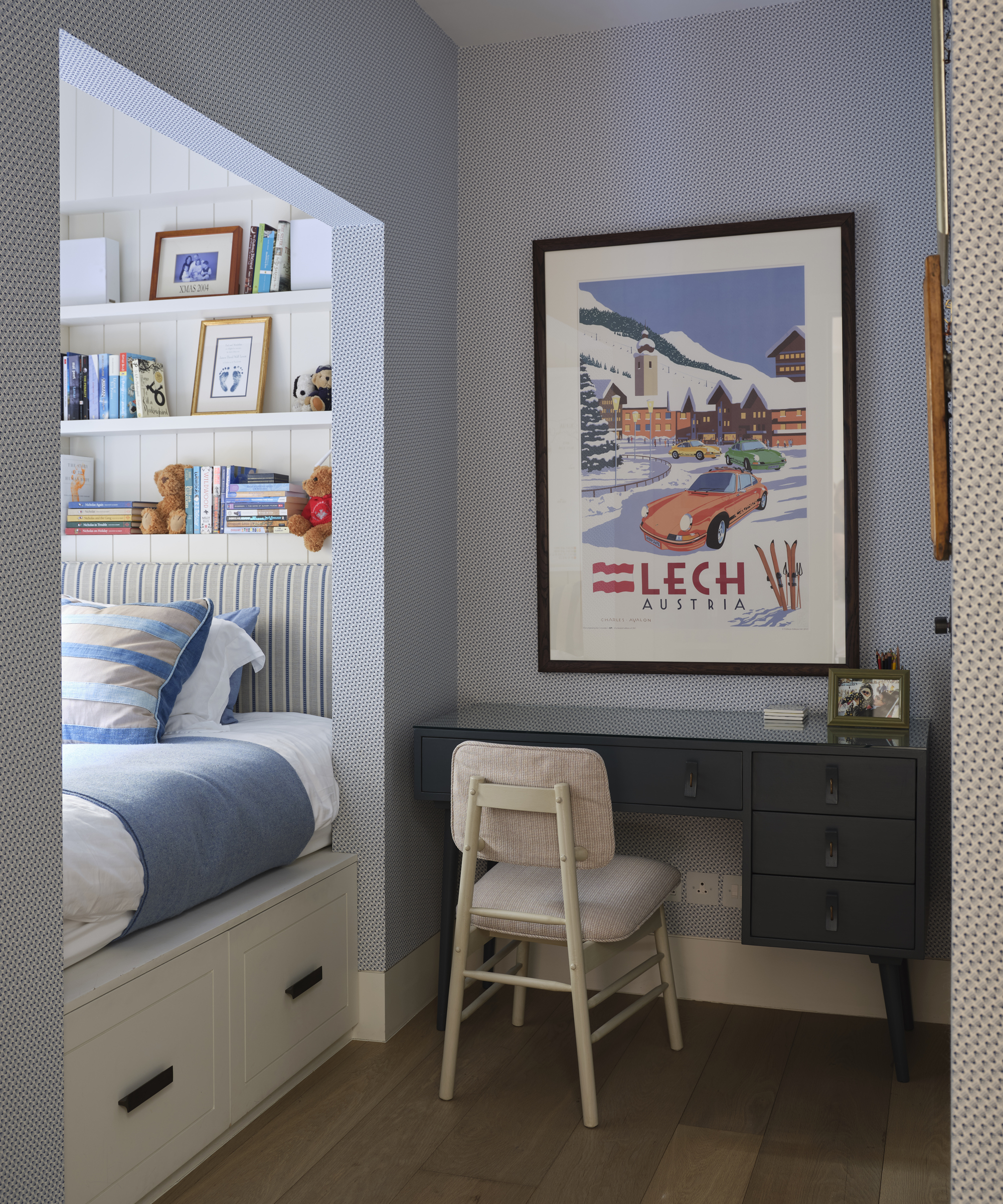
Your clothes storage ideas should not stop at your closet boundaries. You should also consider how to store clothes long-term to keep your off-season pieces out of the way when not in use.
Barbara Brock, professional organizer at Barbara Brock Inc., shares, 'It’s essential that in your primary closet, you have only your seasonal clothes. Edit and remove your out-of-season wardrobe - including shoes, belts, and other small accessories. This will help you in dressing for the season.
'Vacuum storage bags are often best for this,' she adds. 'They were invented to maximize space and to protect items from damage. These storage bags can be stacked on top of each other and put into an out-of-the-way cabinet, underbed storage ideas, or on a shelf.' Target offers a range of compression bags in a variety of sizes to suit all of your garments.
Done correctly, this storage idea can help you transition your wardrobe from winter to summer, and vice versa, seamlessly.

Under bed storage is a great way to expand on your existing closet space, be it for storing your off-season items, or offering a place for your bulkier pieces that need folding, but take up too much space in dresser drawers. These bags on wheels make them easy to pull out quickly and access as needed.
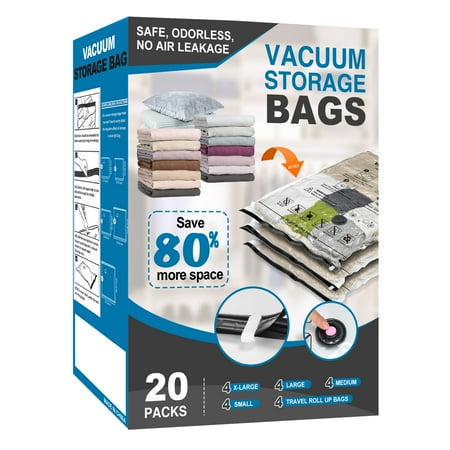
Keep your unused clothing in vacuum bags to limit their footprint in your home when they are out of season. Wash them before storage to keep the items fresh in between uses

For items you cannot hang such as sweaters, use zip up garment boxes with clear fronts so you can still see and access items easily, while protecting delicate items from pests.
9. Good lighting helps keep things organized
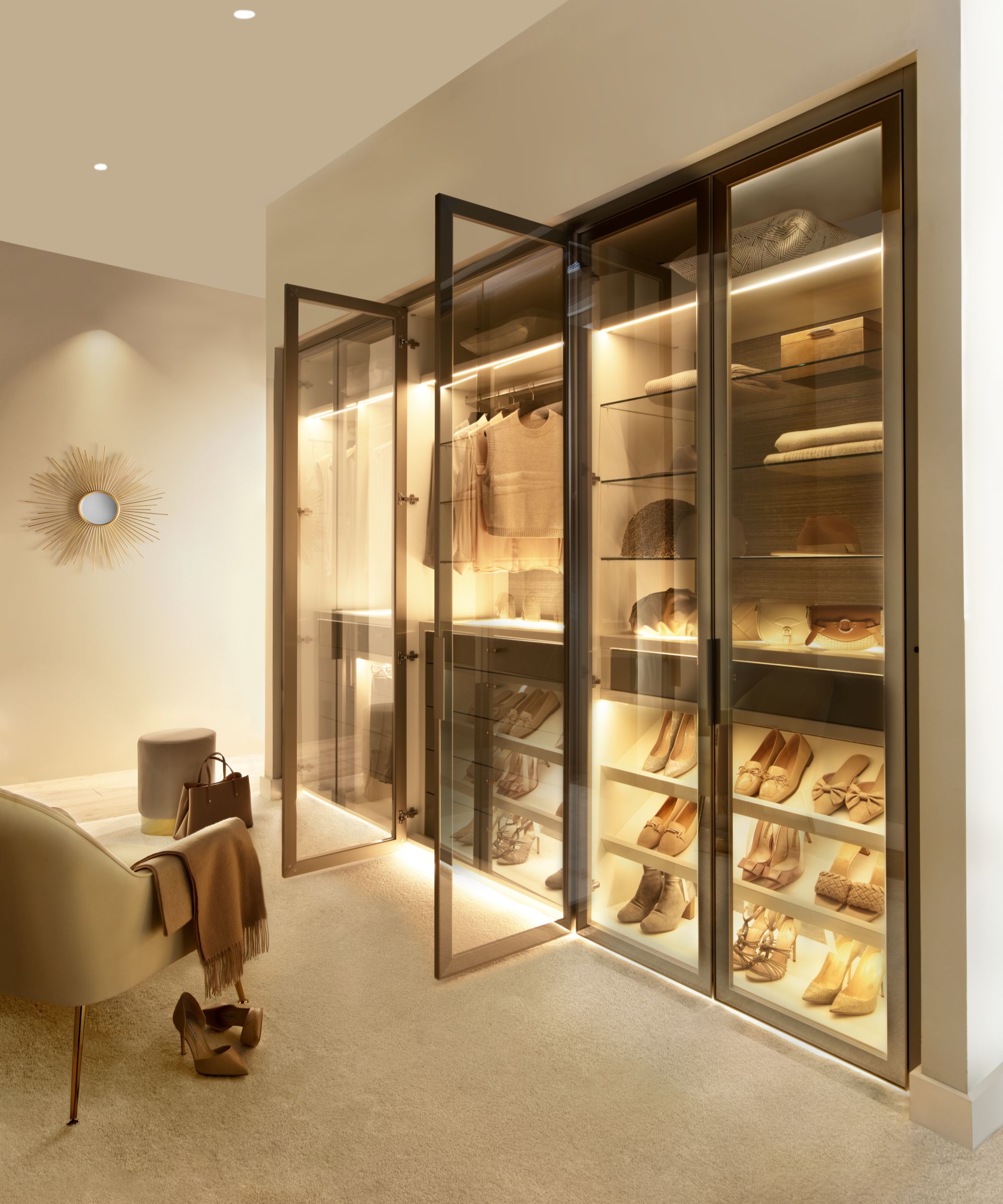
Closet lighting is often a forgotten element when planning clothes storage ideas, but incorporating some form of illumination will make closet interiors or walk-in spaces infinitely more usable.
Consider strategic placement of downlighters along the top perimeter of cabinets to highlight the interior, or try recessed spots to brighten the baseline.
LED strip lights are an easy alternative and can be affixed along shelves, behind doors, and above rails, or consider running strip lights vertically so that they illuminate the entire length of hanging garments.
These automatic-sensor LED lighting strips, from Amazon, are especially useful if you need to light a closet without wiring.
Meet the experts
Clothes storage is made simpler with some good closet decluttering tips to help you pare back the non-essentials and make space for the items that make you feel your best.







